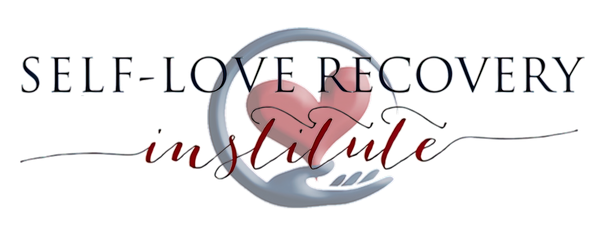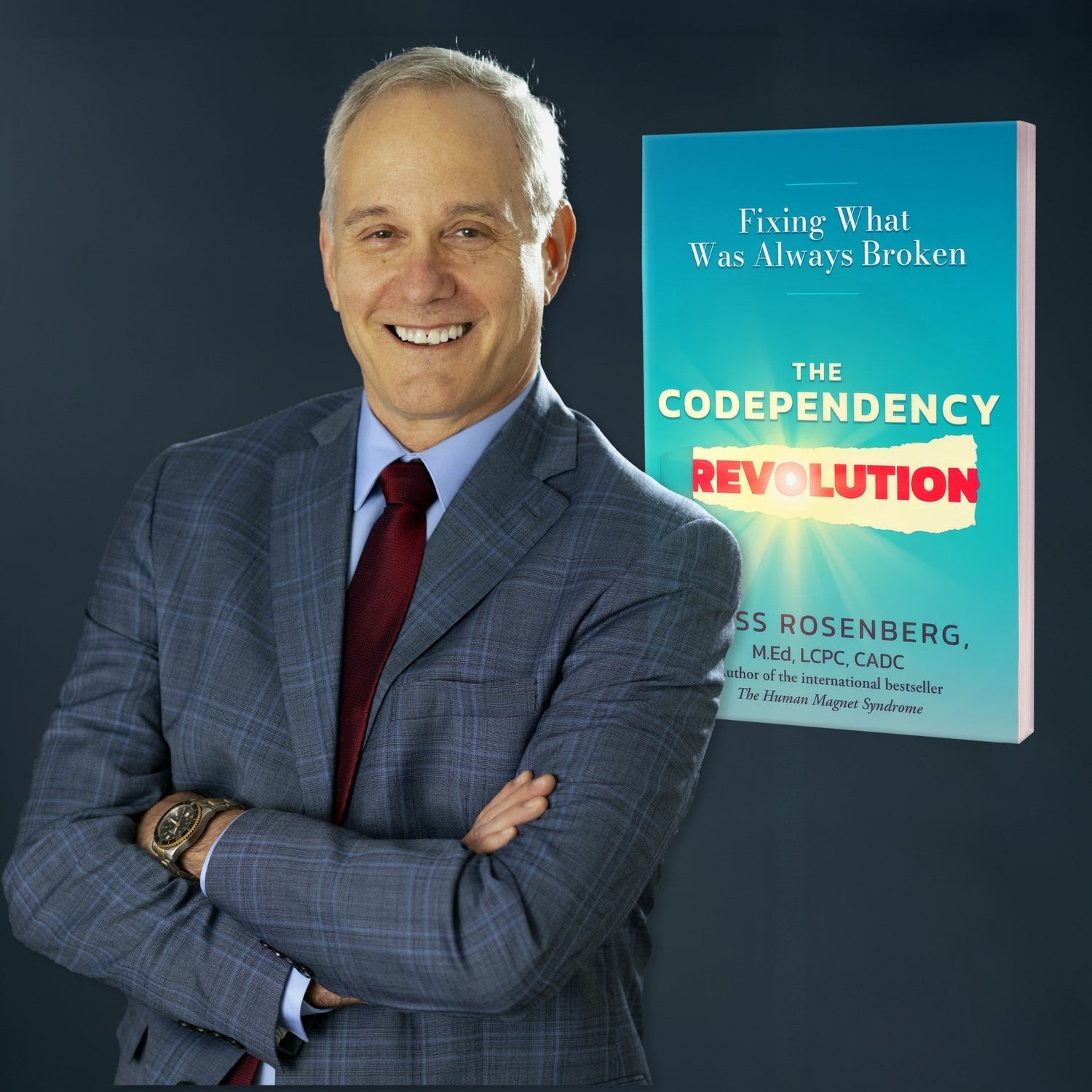Self-Love Recovery Institute – President/CEO
Psychotherapist, Educator, Author, Expert Witness
Ross Rosenberg has significantly impacted the field of mental health by reframing how clinicians and individuals understand codependency, narcissistic abuse, and dysfunctional relationship patterns. Through his Human Magnet Syndrome theory, the development of Self-Love Deficit Disorder (SLDD), and the Self-Love Recovery Treatment Model, Rosenberg provides a trauma-informed, clinically grounded path toward personal healing and emotional empowerment.
The Human Magnet Syndrome: Why Opposites Attract Dysfunctionally
Central to Rosenberg's work is the Human Magnet Syndrome theory, which explains why individuals often find themselves in repetitive, toxic relationships. According to this framework, people are unconsciously drawn to partners with opposite emotional dispositions, much like the way opposite poles of a magnet attract. This "magnet pull" results in a powerful but dysfunctional connection that often repeats throughout an individual's life.
In these pairings, those with codependent traits—"negatively charged"—tend to over-prioritize others' needs while neglecting their own. These individuals often lack a strong sense of self and seek validation and emotional safety. Their partners, typically with narcissistic traits—"positively charged"—are controlling, self-absorbed, and emotionally dismissive. The psychological chemistry between these two types creates a highly compelling, yet ultimately destructive, relational dynamic.
Rosenberg powerfully illustrates this bond with a dance metaphor: the narcissist leads, exerting control and dominance, while the codependent follows, intuitively adapting to the narcissist's emotional rhythm. This tango of dysfunction continues because both roles complement each other's emotional deficits, reinforcing the very trauma that led to the relationship.
Redefining Codependency: Toward Clinical Relevance
Rosenberg critiques the traditional concept of codependency as outdated and lacking clinical utility. He proposes a more accurate and compassionate definition that aligns with his Relationship Compatibility Theory. In this view, codependents are those who offer excessive amounts of love, respect, care, trust, and protection (LRCTP), expecting mutual exchange, but rarely receiving it. Instead, these offerings are exploited by narcissistic partners, creating a painful imbalance.
To address this inadequacy, Rosenberg introduces Self-Love Deficit Disorder (SLDD) as a more clinically precise term. Unlike the mutual dysfunction implied in codependency, SLDD centers on a chronic lack of self-love. This condition, rooted in childhood attachment trauma and an inability to self-validate, drives people to seek validation and connection from emotionally unsafe partners.
SLDD reframes the issue as one of internal emotional injury rather than defective behavior. The focus shifts from blame to healing, with an emphasis on rebuilding a foundation of self-worth through trauma-informed psychotherapy. Rosenberg makes it clear: SLDD is not a character flaw, but a treatable condition.
Subtypes and Typologies of SLDD
In further exploring SLDD, Rosenberg created a typology of codependency subtypes, identifying the unique ways individuals express this condition. These include Active, Passive, Oblivious, Cerebral, Threshold Reactor, Narcissistic-Like, Abandoning, Sexually Compulsive, and Codependency Anorexic types. This classification enables a nuanced understanding of how SLDD manifests differently in individuals and informs more personalized treatment approaches.
The Relationship Compatibility Continuum
Rosenberg's Relationship Compatibility Continuum is a conceptual model that quantifies the distribution of emotional giving and taking in relationships. It introduces the Relationship Compatibility Value (RCV)—a scale from -5 to +5—representing how much LRCTP a person gives or takes. A person with an RCV of -5 gives nearly everything away, while someone with a +5 RCV takes nearly everything. An RCV of 0 signifies emotional reciprocity and relational health.
Crucially, Rosenberg introduces the Zero-Sum Balance Concept, which states that dysfunctional partners often "match" when their RCVs equal zero. For example, a codependent with an RCV of -5 frequently pairs with a narcissist with a +5. This explains the psychological compatibility of toxic pairings and further supports the Human Magnet Syndrome theory.
Healing shifts one's RCV toward zero, helping individuals attract healthier partners and develop emotionally balanced relationships.
The SLDD Pyramid: Tracing the Roots of Dysfunction
To clarify the developmental roots of SLDD, Rosenberg created the SLDD Pyramid, a five-level model that traces the condition's origins from early trauma to outward behavioral symptoms. At the base is attachment trauma—abuse, neglect, or conditional love, often from narcissistic caregivers. This trauma gives rise to core shame, a deeply held belief of being inherently unlovable.
Core shame leads to pathological loneliness, an unbearable and chronic sense of emotional isolation. To cope, individuals develop SLDD addiction—a compulsive drive to seek relationships (often with narcissists) as a way to self-soothe. At the top of the pyramid is externalized dysfunction, which includes familiar symptoms like people-pleasing, weak boundaries, and emotional overinvestment.
This model clarifies that codependent behaviors are not the core issue, but the visible symptoms of deeper emotional wounds. Healing, therefore, must address the root trauma, not just the surface behavior.
The Self-Love Recovery Treatment Model: A Roadmap to Healing
At the heart of Rosenberg's clinical work is the Self-Love Recovery Treatment Model, a ten-stage process that provides a structured path to healing from SLDD. Rather than merely addressing surface-level symptoms, this model targets the emotional injuries that drive dysfunctional relationships. The ten stages include:
-
Hitting Bottom–Recognizing emotional pain and the need for change
-
Education and Insight–Learning key concepts from Rosenberg's theories
-
SLDD Addiction Recovery–Breaking compulsive relational patterns
-
Gaslighting Deprogramming–Reversing internalized narcissistic manipulation
-
Social Support–Establishing a healthy emotional support system
-
Preparing for the Narcissistic Storm–Anticipating pushback from toxic individuals
-
Boundary-Setting and Escape Planning–Creating safety and independence
-
Trauma Integration–Using the HITCH Method to heal past wounds
-
Self-Love Abundance–Developing durable self-worth
-
Self-Love Mutual Relationships–Forming reciprocal, healthy partnerships
This model serves as the foundation of Rosenberg's Self-Love Recovery Program and is widely supported.
Supporting Tools: HITCH and Observe–Don't–Absorb
Two additional tools complement Rosenberg's treatment framework. The HITCH Method (Healing the Inner Trauma Child) is a psychotherapeutic technique designed to resolve unresolved childhood trauma. Observe–Don't–Absorb is a practical emotional defense strategy, helping clients protect themselves from emotional manipulation, especially when dealing with narcissistic individuals.
Conclusion
Ross Rosenberg has reshaped the conversation around toxic relationships, codependency, and narcissistic abuse by introducing trauma-informed, emotionally intelligent frameworks that address the root causes of emotional pain. Through theories such as the Human Magnet Syndrome, the Relationship Compatibility Continuum, the Self-Love Deficit Disorder (SLDD) Pyramid, and the Self-Love Recovery Model, he provides individuals and clinicians with practical tools to understand and heal from narcissistic abuse and chronic self-love deficiency.
By reframing codependency as Self-Love Deficit Disorder, Rosenberg moves away from outdated terminology and offers a more compassionate and clinically grounded perspective. His work empowers individuals to reclaim their self-worth, develop authentic self-love, and build healthier, more emotionally balanced relationships.
Rosenberg's work has helped countless individuals reclaim their self-worth and build healthier, more authentic relationships. His contributions have transformed the understanding and treatment of relational trauma, empowering people to break free from dysfunctional patterns and begin the journey toward lasting emotional well-being. His insights continue to guide those seeking recovery and emotional balance.


0 comments